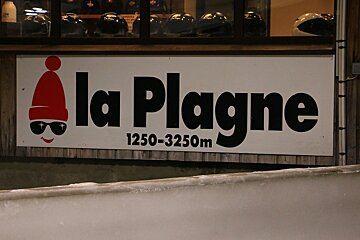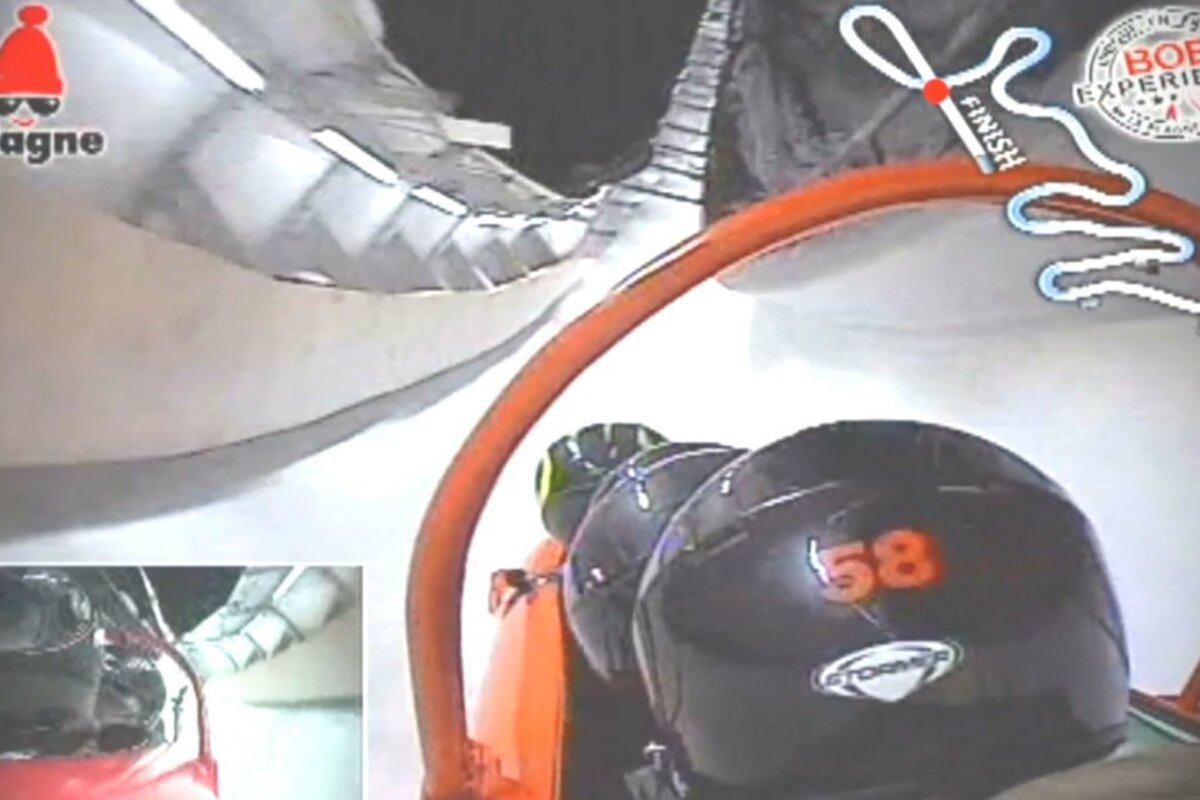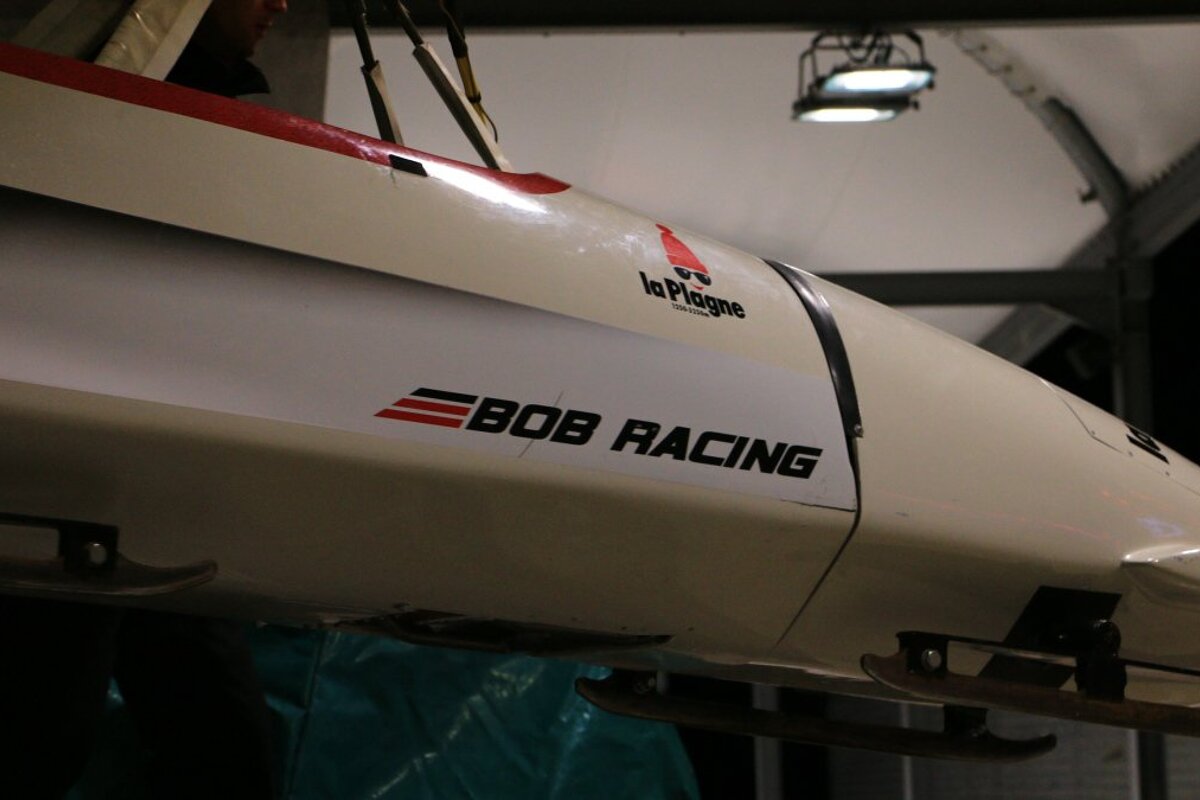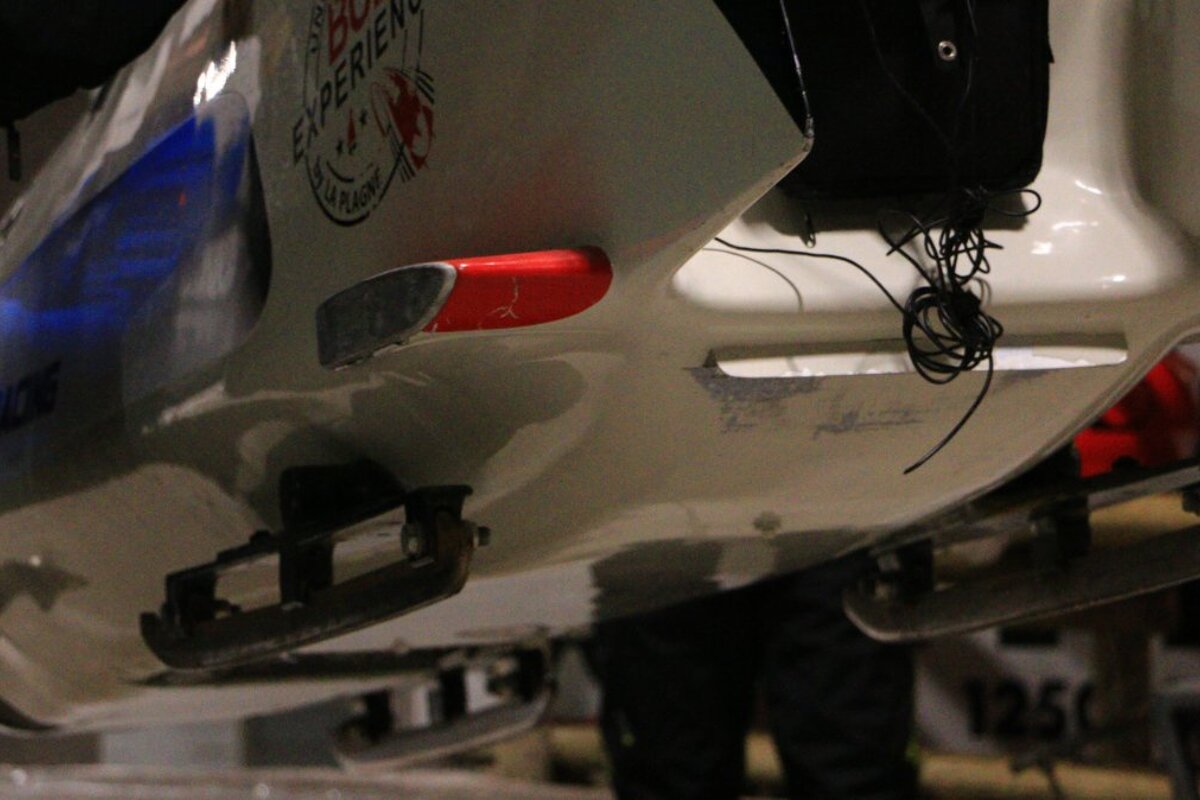
© Stuart Hamilton

© Stuart Hamilton

© Stuart Hamilton

© Stuart Hamilton

© Stuart Hamilton

© Stuart Hamilton

© Stuart Hamilton

© Stuart Hamilton
Bobsleigh experience in La Plagne
An exhilarating experience not for the faint hearted
In 1992, Albertville hosted the 16th Winter Olympiad with La Plagne selected as the venue for the Bobsleigh event.
The Olympic track was constructed between 1988 and 1990 just below Plagne 1800 – a track that’s still in use to this day for competitions and by international teams training between events. The La Plagne course is unique to France and is one of only 16 fully functioning bobsleigh venues in the world.
As well as competitions and training sessions, the track now also hosts “Experience Rides” to give the general public a chance to taste the thrill and excitement of bobsleigh and luge. It’s the closest us mere mortals will ever get to experiencing these thoroughly ludicrous sports.
I remember the 92 Games well. I was in France on holiday, actually in the resort of La Plagne at the time. I remember watching the bobsleigh thinking it must be a special kind of person that willingly hurls himself down a track of sheer ice at speeds in excess of 130km/h. So it was with a sense of slight bewilderment that, almost 25 years to the day, I found myself atop the exact same track. Only this time, wearing a helmet, listening to a safety briefing while compacted into the back of a bullet-shaped coffin on rails, the sole purpose of which is to go from top to bottom in the shortest time possible.

In truth, I only had myself to blame. After all, these things don’t just “happen”. In my wisdom, I had bought my good lady a bobsleigh ticket for Christmas. It was one of those, “It’ll be funny, she’ll be terrified” type presents. Little did I know we possess the same sadistic streak and Eléa had reciprocated with the exact same gift.
And so it came to be I was now sat staring down the metaphorical barrel of a gun – a 1500m u-shaped tube of crushed ice lying between me and the finish line. The track features 19 snaking curves which rocket 125m down the yawning valley below Plagne 1800. Viewed in profile, it even looks sketchy.
We arrived half an hour early and were shepherded into a waiting area, told to empty our pockets, take off belts, remove jewellery, explore faith etc. There were a few pensive faces, not helped by the two screens showing live video of those going before us. I watched as the passengers’ heads jolted left and right in harmony with all the grace and fluidity of Thunderbirds puppets. See, as I would soon learn, when you’re in a bobsleigh you are in control of nothing. Not even yourself.

We were ushered to the start area – it would be our turn next. A stocky, experienced-looking gent dressed in official garb marched confidently towards us, an assured smile etched across his face. He introduced himself as Jacques Duc, our pilot for the ride. His confidence was reassuring. One man’s belief could surely counter the increasing disquiet of three assembled passengers.
Jacques went onto explain the intricacies of the track, in particular the significance of Turn 4. “By Turn 4, you need to be comfortable. If you’re not, you’re in for a bad ride. So get secure and make sure you’re braced and in a good position by this point. By turn 6, you’ll feel the first big G’s and after that you’re pretty much locked in.”
As the tallest passenger, I was directed to the back of the bob with another rider hunched in front of me and Eléa positioned closest to the front. The significance of being at the back did not elude me – the rider at the rear of a bobsleigh traditionally experiences the greatest G.
Jacques was last on board, climbing into the cockpit before the track staff eased us out gently onto the worn tramlines carved by countless descents before us. I was a tad disappointed, confused why didn’t they push us quicker. I had expected the full Olympic experience, a countdown, some runners launching us for speed, maybe some cowbells. Idiot.
Turns 1 and 2 were innocuous, gentle set-up turns. “This is going to be easy”, I thought as I poked my head out over the shoulder of the rider in front, quietly mocking the bob experience and questioning what all the fuss was about. At Turn 3 we gradually picked up speed before a noted acceleration toward the all-important Turn 4.

By now I felt in proper Bobsleigh Mode. We traversed up the wall, G-forces squeezing me back and down into my ‘seat’. This was good - this was my moment. I had conquered my fears and was King of the Track. I felt myself laughing – the kind of involuntary laugh that always seems to strike me at these moments – a laugh borne largely from adrenaline tinged with fear.
At the exit of Turn 4, things changed dramatically. For a start, I noticed I’d stopped laughing. We accelerated hugely as the berm spat us out, sending us hurtling back into the middle of the track, bouncing into the well-worn grooves before sinking sharply down to the next turn. Turn 5 was a quick shunt to the right before the track dropped away and we accelerated further. I was conscious of a force pushing onto my chest, making it harder and harder to breathe.
By the time we reached Turn 6, we were tearing down and the G’s were enormous. We rode high up the bank, gravity compelling us down and out. I now understood why Jacques had warned us about this turn. By this point, you’re nearing three times the force of gravity ie your body mass is 3 times heavier than normal, pressing your innards down to the base of the sled. We shot out the other side at lightning speed, sled rails juddering back into the solid, icy ruts.
By turn 7 we’d truly become ragdolls, heads bouncing in unison side to side. If it hadn’t sunk in before, it was here I realised we were completely in Jacques’s hands with zero control over anything. A fleeting thought raced through my head – where are the brakes? There are no brakes on a bobsleigh. We were, as Jacques had so eloquently put it, “locked in”. Turns 7, 8 and 9 passed in a blur, sharp kinks that flipped our heads like burgers on a hotplate. We bounced off the sides of the track – a strict no-no in competition terms – but, at that moment, a welcome buffer to our ever-increasing speed.

Turn 10 was a seemingly endless arc, curving left to right. The G’s here were colossal. So much so in fact that sometime around this point, my nose exploded. I don’t use this term figuratively – or with any sense of pride. As we rounded the curve, high up the wall, my nose evacuated itself. It was my first G-induced sneeze. On the plus side, at least I could breathe easier.
Now, I’m no skilled mathematician but I would normally consider myself able to count past 10. Not so in a bobsleigh at 120km/h (75 mph approx.). The subsequent turns were a blur of white ice, scraping rails, vertical walls and the occasional ephemeral glare as floodlights shot past.
Left, then right, then left, right, left again – I have no idea. All I know is we rode high and we rode fast as my body crashed side to side, the sled careering from one turn to the next. The last few bends were the most exhilarating. Turns 17, 18 and 19 are the fastest with the most extreme G. These corners are also the most flowing on the track. We arced from one to the next, riding high and smooth round the massive icy walls. We shot out of the last turn into a long uphill stretch, slowing gradually until we came to a halt in the bottom station. My arms and shoulders ached. My knuckles were literally white, still gripping the handrails either side of me. My neck felt like it had become part of the track.
Jacques was first out, taking off his helmet to reveal the same elated smile. Perhaps 30 years piloting at 120kmh does this to you. Whatever the reason, the man was calm personified. “You have a little, errrm . . . “, he flicked his finger down at my jacket. Aha – so that’s where my nose explosion went. “Don’t worry”, he laughed, “it happens”. It transpires that’s not all that happens. He casually commented that, prior taking up bobsleigh, he’d been 20cm taller. The force and compression of riding have shrunk his body. God only knows what shape his spine must be.
He glanced at our time: 58.15. “Respectable enough”, he commented. “The sleds and times are limited here for safety. We came down around 120km/h. The record is 139 km/h set by Bruno (Mingeon – the local ex-World Champion). At that speed the 3 ½ - 4 G’s you experienced become much, much more”. I could tell by his eyes this was understatement.
So, bobsleigh? Worth trying? Worth the money? Let’s put it this way - unless you’re fortunate enough to be a pilot, a Formula One driver or – of course – the member of a bobsleigh team, there’s pretty much nothing else on earth that will let you experience comparable G force. Astronauts at take-off experience less.
In a bobsleigh, time stands still. 60 seconds becomes an eternity. You start and you end. That’s pretty much it. You pass a point of no return and, after that, everything else is down to the skill of your pilot and gravity. It is an unbelievable, entirely unique experience. In fact, my only potential complaint would be questioning whether anything else will compare – if other stuff I might try could now pale into insignificance. It is like nothing else I’ve ever experienced. A literal white-knuckle ride from start to finish.
If you have the opportunity, I thoroughly recommend doing it. Just one word of advice though – definitely blow your nose first.
Greatest thanks to our pilot Jacques and all the La Plagne Bobsleigh staff for the most incredible experience. Encore, encore SVP!

Key Facts
The Bob Experience is available in four versions:
Bob Raft – A self-driving, self-braking bobsleigh that travels up to 80km/h. Cost €45 per person.
Speed Luge – A specially constructed luge with protective cage for a solo descent up to 90km/h. Cost €109 per person.
Bob Racing – The ride featured in this article. A bobsleigh piloted by a professional driver at speeds up to 120km/h. Cost €122 per person.
Olympic Experience – Riders are dressed in professional overalls to ride in a bobsleigh piloted by Olympic medallist and World Champion Bruno Mingeon at speeds up to €130km/h. Cost €295 per person.
For safety reasons, video equipment is not permitted on the track however you can purchase a video of your ride for €25 (example video featured in this article). Note, those with back problems, heart conditions or other significant medical issues are not advised to do ride the Bob Experience. Check with the operators for full conditions.
The Bob Experience runs the full season in La Plagne til 7th April 2017. A shuttle bus runs from resort. The Bob Raft Experience and Speed Luge take place every day between 16.00 and 18.30. Bob Racing happens Wednesday, Thursday, Saturday and Sunday from 17.00. The Olympic Experience is booking only.
Track Stats
The La Plagne bobsleigh track is 1507.5m long and passes through 19 curves at an average gradient of 8.29. The track starts at 1684m and drops 125m to 1559m.
The Albertville Olympics were held between the 8th and 23rd February 1992.
There are only 16 bobsleigh tracks in use in the world. The La Plagne track is unique to France and is still used for competitions and training by teams from around the world ie it’s as real as it gets.
Stuart Hamilton is the Creative Director of iRide Ski and Snowboard App - a new skiing and snowboarding app, available now on Apple iOS and Android.


































